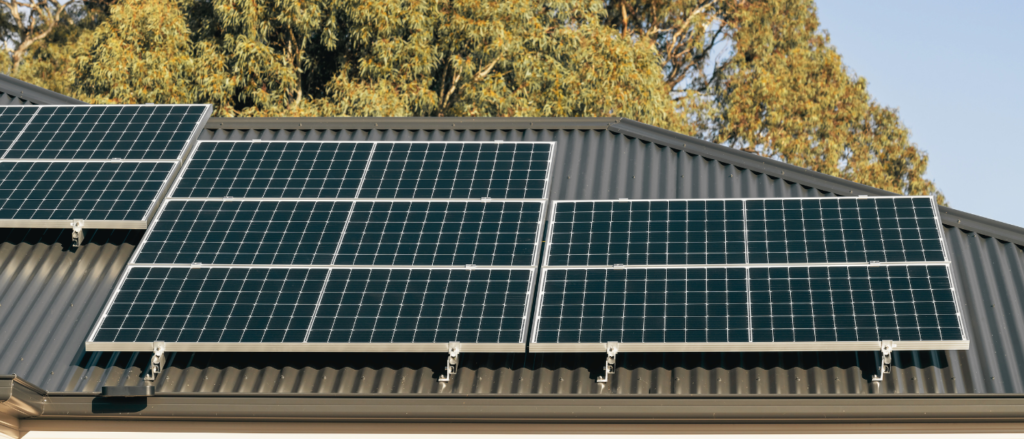With a rapid change in technology and time, Solar Panels have taken a different way and become the most preferred choice for powering homes and businesses. Choosing the right panel system will lead to optimal energy generation with long-term benefits.
Control Energy need:
While choosing the right panel, we need to have an understanding of the current usage of electricity. Starting analyzing your electricity bill for the last one year from seasonal variations in consumption will give a clear picture of the average monthly consumption, helping us with the trend or inefficiency in your usage. By factoring in all the potential changes, i.e., consumption change, purchasing an EV, installing a home office, etc, you can ensure that which solar system will be more adequately suited to your need and meet that.
Also, we consider the importance of your energy goals, whether it is reducing your carbon footprint, contributing to a cleaner environment, or perhaps achieving energy independence and reducing your reliance on the grid. By these, we can set the goal and assist you with the best type of solar system and components that will best align with all your priorities.
Lastly, we see any local incentives, rebates, or FIT schemes that may be available in your areas which can influence the overall cost-effectiveness and feasibility of installing a solar system.
Table of Contents
ToggleTypes of Solar System:
1. Grid Connected System:
This kind of solar system is connected to the public electricity grid, which allows you to draw power when your system isn’t generating enough energy and feed excess energy back into the grid, and this total can cost in reduced electricity bills. But it is important to note that these systems will not provide power during grid outages, as they rely on the grid for continuous operation.
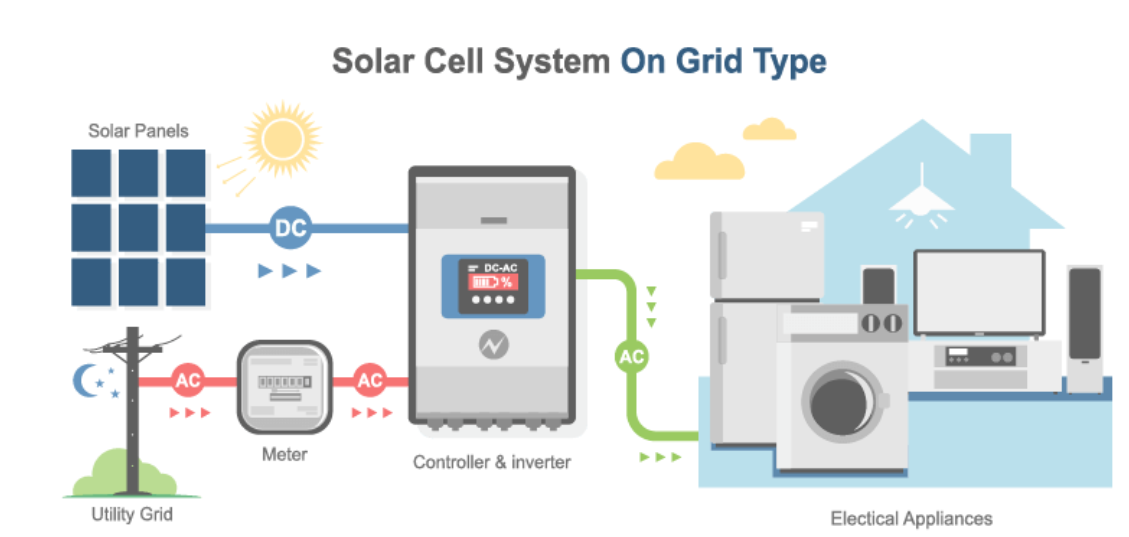
2. Off-Grid Solar System:
It operates independently from the public electricity grid, which relies on solar panel battery storage, which provides power during the times when solar generation is low or mostly at night. These are meant for remote locations which have mostly limited or unavailable grid systems. It requires a large investment upfront, necessitating more extensive battery storage and backup power solutions, such as generators, but in competition, it offers complete energy independence and protection from grid outages, making them a reliable and self-sufficient option
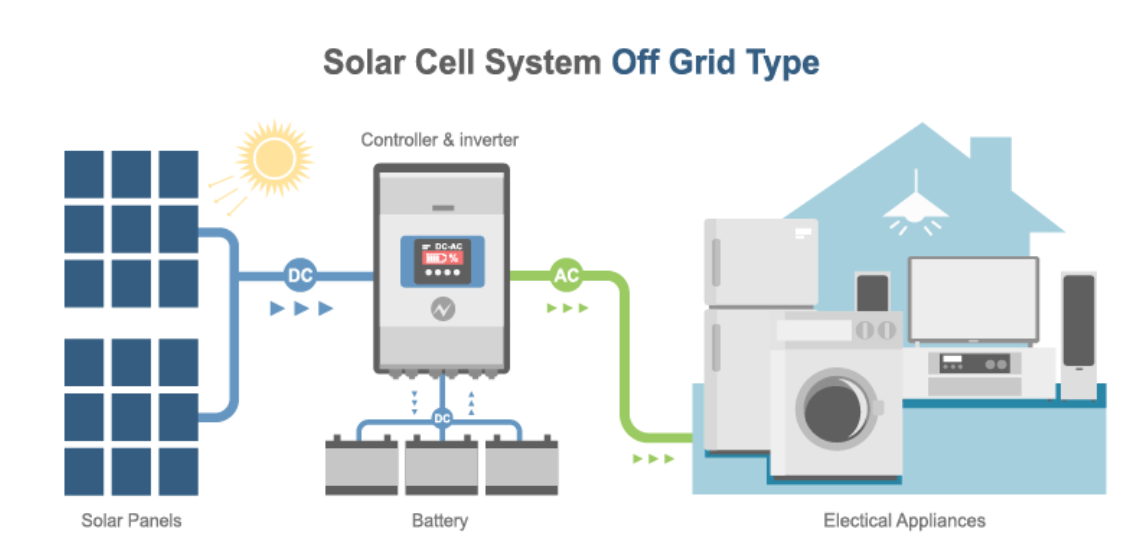
3. Hybrid Solar Systems:
It combines both the benefits off grid and on-grid connected systems, providing mostly grid connectivity and battery storage for enhancement of reliability and flexibility. In this, most energy is generated by solar panels that can be stored in batteries for later use or fed back into the grid, which depends on your preference and utility company policies.
This system provides the advantage of continuous power supply during grid outages, as the battery storage can be utilized to power critical loads. But in contrast, it is a bit expensive due to many other additional charges like battery storage (they provide an optimal balance between energy independence and grid connectivity).

Solar System Components:
It consists of 3 main components that play a huge role in the overall functioning and efficiency of the system. These are mentioned below and will help you to understand more about solar systems and how it works.
1. Solar Panels:

It is mostly known as photovoltaic (PV) modules. It is the backbone of the solar system. First, they capture sunlight and convert it into direct current ( DC) electricity through a process which is called the photovoltaic effect.
Panels are available in different sizes, efficiency ratings, and creative/ innovative designs. The types of Panels are:
a. Monocrystalline
b. Polycrystalline
c. Thin Film
These all differ from the prices to different functions and properties, and hence these 3 have some specific features which make them different from one to the other.
2. Solar Inverters:
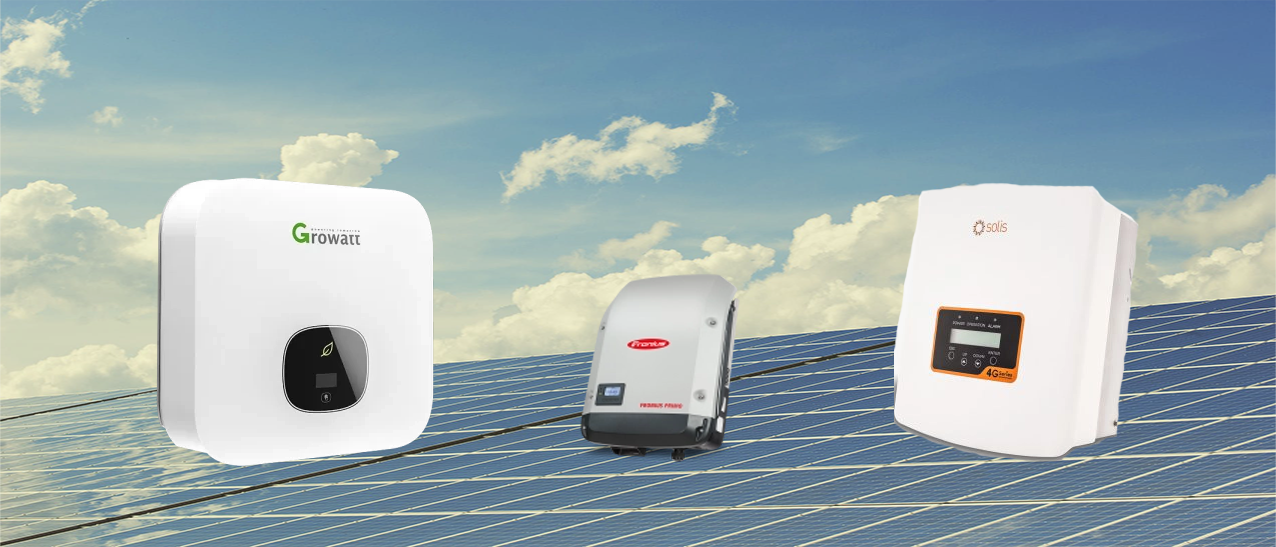
It is a more important crucial part of the solar system as they help to convert DC electricity generated by the solar panels into alternating current (AC) electricity, which is compatible with your home appliances and the electrical grid.
There are two main types of inverters which are:
a. String Inverters
b. Micro Inverters
String Inverters:
It is centralized units that deal with the combined DC output of all the solar panels in a string.
Micro Inverters:
It is installed on each individual panel, converting the DC electricity at the source; typically more expensive but can offer advantages in terms of system efficiency and monitoring capabilities.
3. Solar Batteries:
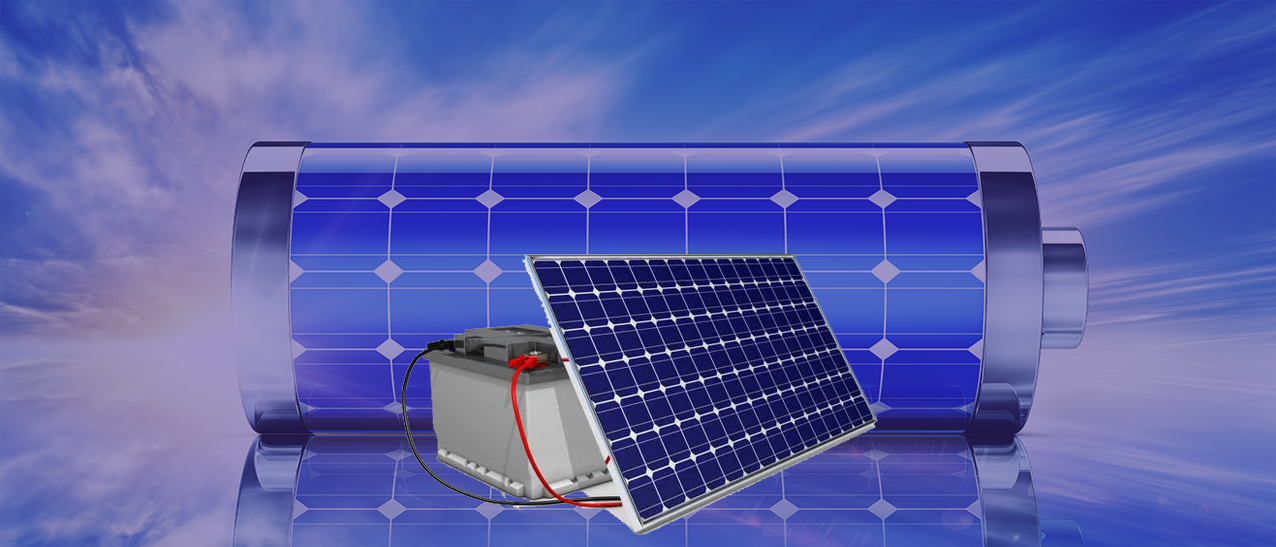
These serve as energy storage solutions for solar systems (off-grid and hybrid configurations). Their main work is to store excess energy generated by panels and use it at night or when there is a shortage of low solar generation or power outages. Batteries differ in size, features, prices, and capacities. Common batteries are:
a. Lithium Ion Batteries: Mostly known for higher efficiency, long life span, and lighter weight but have a high price compared to other types of batteries
b. Lead Acid Batteries: It is a kind of rechargeable battery that uses a lead-dioxide cathode, a sponge metallic lead anode, and a sulfuric acid electrolyte. These batteries have been widely used for various applications due to their relatively low cost, high surge current capability, and ability to provide a high current output but have someone or other limitations (relatively low energy-to-weight ratio and limited cycle life compared to other battery technologies.)
Factors while choosing Solar Panel Systems:
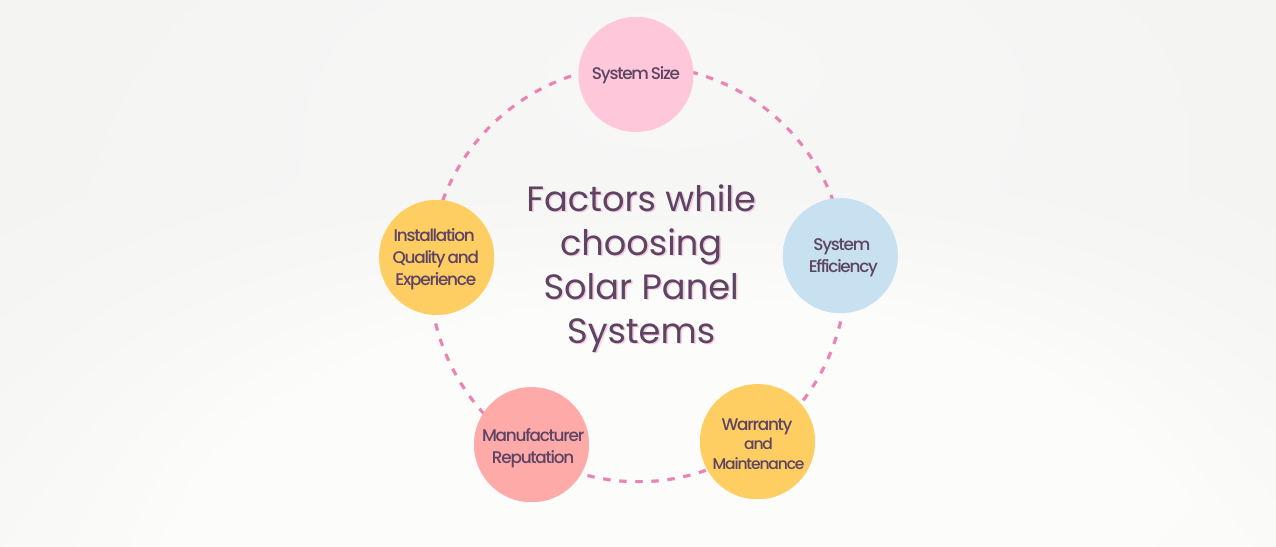
- System Size: Matching the energy needs, the budget, and available roof space is must before selecting solar size, which should generate enough power to cover your consumption while also considering potential future increases in energy demand.
- System Efficiency: Choosing high-efficiency solar panels and inverters for maximizing solar generation. More efficiency will produce more energy per unit of sunlight, allowing you to generate more power within a given smaller footprint. And vice versa, the higher the efficient components, the higher the price leads to generating long-term savings on your energy bills.
- Warranty and Maintenance: A long-term warranty period and maintenance service will ensure long-term performance. A solid and hard warranty will ensure that one investment is secure and safe against manufacturing defects or any performance issues.
- Manufacturer Reputation: A well-researched track record is necessary of solar system manufacturers to ensure the quality and reliability of their products. As a reputed manufacturer, more history of providing durable and high-performing components, as well as responsive customer support, review readings, testimonials, and industry report.
- Installation Quality and Experience: Quality and installation can directly significantly impact the performance and longevity of your solar system. Working with experienced installers will ensure that your solar system is well designed and installed with proper explanation of details to the customer and maintaining all best practices and safety standards.
Conclusion:
The decision to invest in a solar energy system is indeed crucial for reaping the maximum benefits of solar power. To make an informed choice, it’s essential to assess your energy requirements, gain knowledge about various solar system types, and factor in aspects such as system size, efficiency, and warranty.
Taking the step towards solar energy adoption not only helps individuals reduce their carbon footprint but also contributes to a greener and more sustainable future for the planet. Interested individuals are encouraged to reach out to Sunboost today to explore their solar energy options and begin their journey towards a cleaner and more environmentally friendly energy source.
Harry is a passionate writer specializing in renewable energy and sustainability. With a deep understanding of solar installation, maintenance, custom system design, and advanced battery storage, he brings technical expertise to his writing, making complex energy concepts accessible to businesses and homeowners alike.
Having covered numerous residential and commercial solar projects, Harry educates and empowers his readers to optimize energy efficiency and transition to clean energy solutions. As a key voice in the industry and a leader at Esteem Energy, he is committed to delivering insightful content that promotes innovation, cost-effective solutions, and a greener future.
